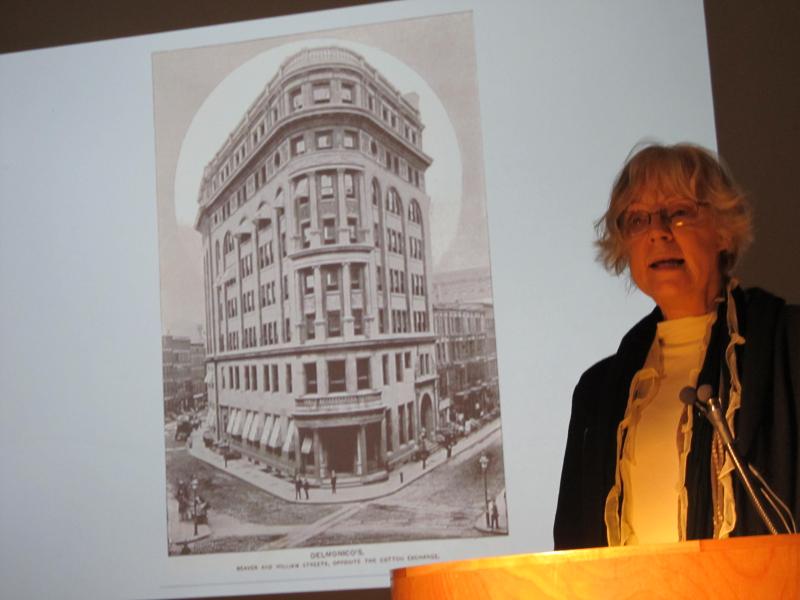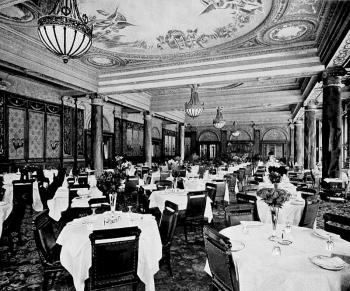ROCKLAND – Want to know what the rich used to order to eat? Oysters and caviar for appetizers, turtle soup, beef or English sole, followed by a delicacy people rarely got in the winter, fresh peach Melba with sliced peaches from South Africa — those menu items were the most ordered by high society diners in New York City starting in 1890s, as the city's most luxurious restaurants began to take off.
Author Virginia Tuttle gave a lecture at the Farnsworth art Museum on March 9 entitled “Puttin’ on the Ritz:” The Restaurants of New York.” Tuttle, a retired curator from the National Gallery of Art in Washington DC, now lives in Camden, and has spent several years meticulously researching the late 19th and early 20th century restaurants in New York.
In many ways, the celebrity chef culture was as prominent then as it is today.Though there were no “Food Networks” at that time, the chefs, who were invariably French, were regarded as high-paid celebrities who ruled like despots over their enormous, lavishly equipped kitchens and extensive, expertly trained cook staffs. Reporters from major newspapers routinely dedicated much of their column space to the inner workings of a restaurant and even the chef’s personal life.
The farm-to-table movement is also a surprising similar theme. Some say it only harkens back to the ‘60s and ‘70s, but Tuttle’s research shows that these master chefs (who often apprenticed and trained for 20 years) presided over the kitchens of The Ritz-Carlton, Waldof-Astoria, Delmonico and relied on their stewards to rise at 4 a.m. every morning and traipse all over the city to procure the freshest items shipped from farmers and fishermen in upstate New York spanning to New Jersey. With the new invention of refrigerated train cars, chefs were able to use far-reaching supply lines to acquire the finest wines and freshest produce (even in the dead of winter) for the fortunate few of New York who dined in their restaurants.
Back to the menus. One of the most interesting aspects of Tuttle’s lecture were menus from The Waldorf-Astoria she procured from 1908 with 125 items on it, including duck and at least seven types of wild fowl. “They served two menus simultaneously, the standard menu and the “specials” altogether 300 menu items a night,” she said. That might seem like a lot today, except for another astonishing fact.
Many of New York City’s major restaurants kicked out nearly 4,000 meals for breakfast, lunch and dinner and then another 4,000 meals served after theater was out, around 10 p.m., totaling 8,000 meals served a day. This is unheard of in today’s restaurant scene. The “back of the house” or the kitchens, were massive, run like a military operation with one chef presiding over 8-10 stations each supervised by its own chef. “There were about 200 staff members in the kitchen, primarily men,” she said. “The only staff you’d find who were women were in peeling vegetables or washing dishes.”
Many of these establishments have long gone the way of the top hat and monocle. “To my knowledge, there are no restaurants like this anymore,” she said. Tuttle continues to do research for the material she hopes to turn into a book on this subject.
Kay Stephens can be reached at news@penbaypilot.com





























